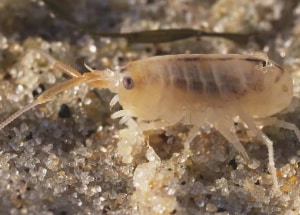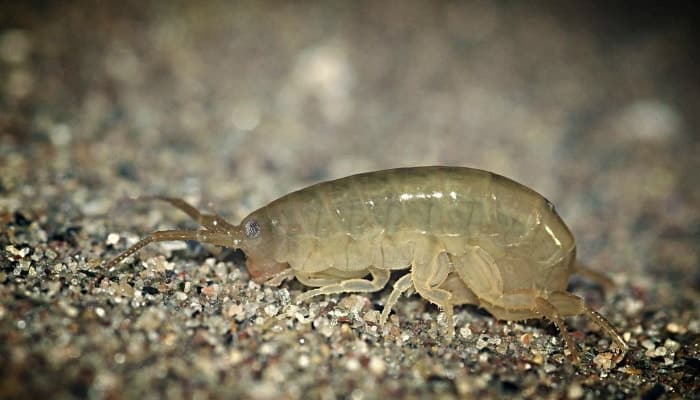For most people, the perfect holiday by the sea does not include beach bugs that bite you until all you want to do is go home. Sand fleas are one species that definitely has the potential to upset your plans. Apart from ruining your mood, they bring about itchiness and, more alarmingly, a number of diseases.
This is surely not your dream scenario, so I’m going to share with you some prevention tips and bite relief techniques to make sure that the bugs won’t ruin your rest! First of all, however, we need to clear up the terminology.
[wpsm_titlebox title=”How to Get Rid of Sand Fleas” style=”main”]
- Try to find out where sand fleas breed.
- Use common pesticides. They are very effective, but not completely safe for sandpits and other areas where children and/or pets may be exposed to them.
- Use diatomaceous earth. It is a more environmentally friendly solution.
- Collect the remaining larvae.
[/wpsm_titlebox]
Know Your Enemy
The term sand flea is somewhat confusing as it applies to several types of pests, not at all alike. These include members of the Talitridae family, tiny crustaceans that actually resemble fleas due to their size and hopping stride.
There’s a lot of misinformation on the web about these little creatures, but one thing you needn’t worry about is their bites since sand hoppers (that’s another name that they go by) don’t feed on human blood.
Chigoes, also sometimes referred to as sand fleas, are less harmless since they have the habit of burrowing in people’s feet, causing tungiasis. However, they mostly inhabit tropical areas and Africa. Our focus today is going to be on the sand fly, a more fitting name for a small yet dangerous representative of the Diptera order.
Other names for sand fleas include sand bugs and beach fleas. These all are umbrella terms referring to several species and families whose common feature is that they mostly occur in sandy areas, including river banks and, of course, beaches.
Most species in the category are very small, usually around 3 mm long — hence the name no-see-ums used to refer to certain types of sand fleas. If you look closely enough, you’ll notice that the critters also have very long, thin legs, and their somewhat hairy wings stand up at rest to form a V shape. Their color can vary depending on the exact species.
Just like with mosquitoes, it’s the female that bites humans as it needs a blood meal to lay eggs. Unfortunately, this feeding habit causes the insects to spread infection as some of them can carry Leishmania and other disease-causing microorganisms. The good news is that these cases are relatively rare.
What Are the Signs of a Sand Flea Infestation?
In most cases, you’ll just see the tiny parasites or get bitten before you do. They normally keep close to the ground, so lower legs are especially at risk. Yet, nothing will prevent the critters from feasting on your whole body if they find you in a lying position.
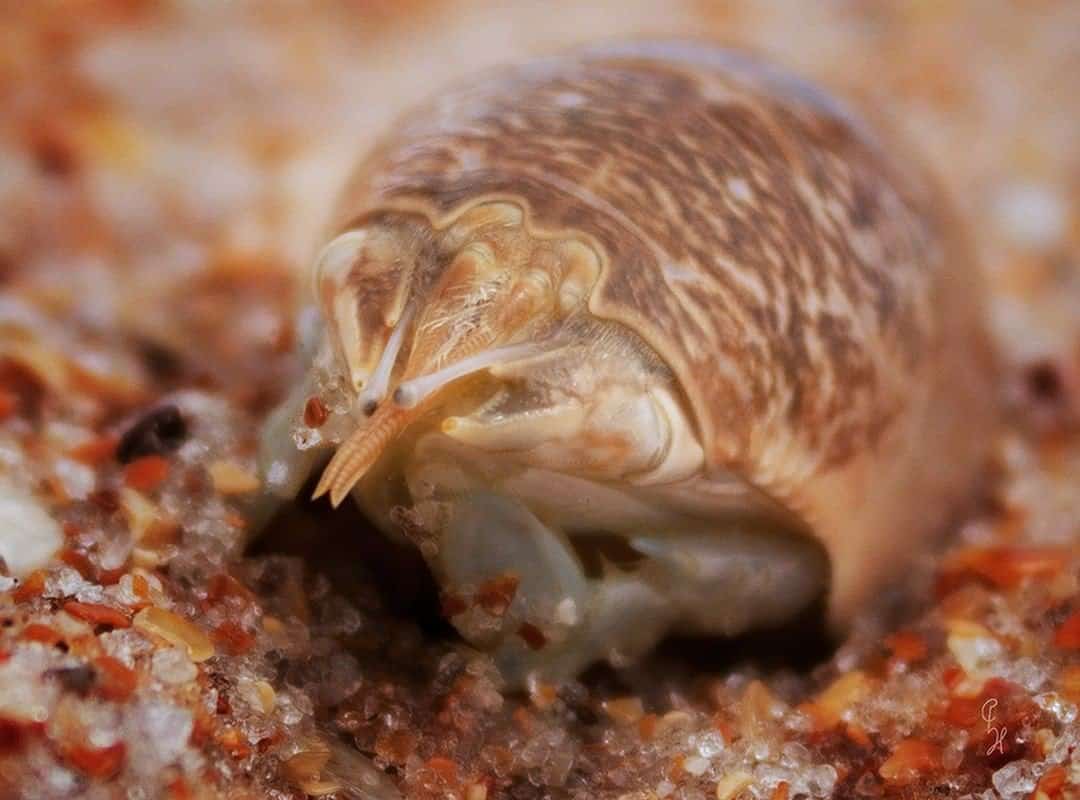
You’ll most probably feel pain when a sand flea buries its long mouthpiece in your skin. It leaves a small reddish bump that might swell and grow extremely itchy. Blisters can form, too, which brings about the risk of skin infections.
It’s therefore very important that you do your best not to scratch the affected area, although it may take a lot of effort to control yourself. Sand flea bites on humans are usually arranged in clusters.

What to Do If You Got Bitten
Recommendations on how to treat sand flea bites differ greatly depending on the symptoms that prevail. It’s commonplace, however, that scratching the spot only makes things worse. Antihistamine drugs can be a welcome solution if you can’t stand the itch.
Alternatively, you might use aloe vera gel or make an oatmeal mask to the same effect. Hydrocortisone-based creams are also well-established sand flea bite remedies. If it’s the ache that you can’t tolerate, a painkiller like ibuprofen will usually alleviate it.
Sand Fleas in the Yard
Sadly enough, the annoying creatures that we commonly denote as sand fleas aren’t really confined to beaches and other near-water areas. Chances are that you’ll find your yard abuzz with little pests at some point, so it’s important to know how to kill sand fleas effectively without endangering yourself and your flower beds.
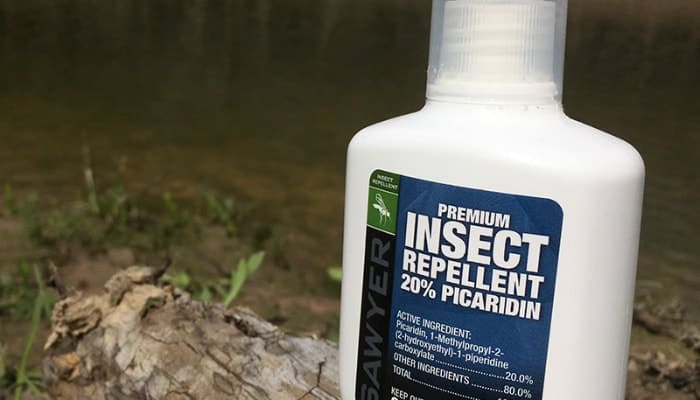
First of all, try to figure out where the critters are breeding. Remember that sand fleas have a liking for dark, damp, and muddy places, so check your sandbox first if you have one. It’s also essential that you inspect all cracks and crevices where larvae and pupae might lie hidden.
Once you’ve spotted the trouble spot, there are two alternatives. Common pesticides are highly effective but not quite safe for sandboxes and other places where children and/or pets might get exposed to them.
Diatomaceous earth is an eco-friendlier solution that won’t put your harvest and health at risk. Made of fossilized water plants, it looks very much like talcum powder. To a wide range of insects, however, it’s a lethal substance that destroys their protective coats and leaves them to basically dry out. For those who feel inclined to this option, it’s important to purchase food-grade diatomaceous earth.
When you’re done, don’t forget to peek into tight corners to collect remaining larvae as these may start the life cycle anew.
FAQ
Are Sand Fleas Dangerous?
The sand fleas that are common in North America and Europe can carry viral and parasitic diseases, including leishmaniasis, manifesting primarily in skin ulcers. Chigoe fleas, or Tunga penetrans, is a parasitic insect that can lay its eggs in human skin. If you have been to a hot place and see a reddish spot with a black dot in its center on your skin, be sure to seek medical help as it might be a sign of tungiasis.
How to Remove Sand Fleas From the Skin?
Again, it’s chigoes that can burrow in your skin for egg hatching, so don’t hesitate to go to the doctor’s for sand flea removal if you feel like a critter won’t let go of you.
Can Sand Fleas Travel Home With You?
The answer is no talking about sand flies. Of course, you might bring home a chigoe flea from a tropical vacation (see above). The tiny crustaceans that also go under the name can also get trapped in your swimsuit, but they are generally harmless.
How to Keep Sand Fleas Away?
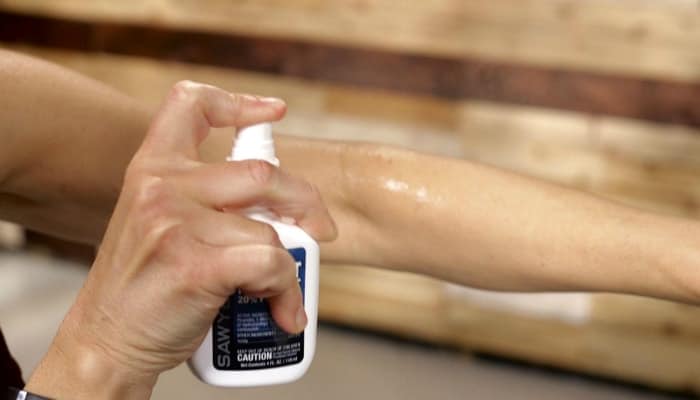
Stay away from the beach in cool, cloudy weather as this is exactly the climate that sand bugs prefer. Avoid sitting on the sand. Instead, bring a blanket or a chair. It’s also a good idea to cover your legs. Finally, a N,N-Diethyl-meta-toluamide, or DEET, repellent (or one based on Picaridin) does a good job at preventing breeding sand flea bites.
Should I Worry About Sand Fleas on Dogs?
Although those are not technically fleas, beach bugs can bother dogs as well as humans. Some sand fleas might suck your pet’s blood. It’s hard to see sand flea bites on dogs since their skin is covered with hair, but you’ll probably notice your furry friend scratching. Canines can also become hosts for chigoes. Lastly, the crustacean sea fleas can get stuck in a dog’s hair, potentially causing irritation.
Related Post: Best Flea and Tick Remedies For Dogs.
Best Sand Flea Treatments
There are a number of useful products on the market that might come in handy during a beach holiday. I’ve made up a list of prevention and bit-relief formulas to spare you the stress of itching incessantly while trying to ward off new bloodsuckers.
1. Benadryl Extra Strength Anti-Itch Cooling Spray: Best Sand Fleas Bite Treatment Spray
[amazon box=”B015JL83WG” template=”vertical” tracking_id=”how-to-get-rid-of-sand-fleas-20″ button_text=”Check price on Amazon”]
Specifications:
- Active Ingredient: Diphenhydramine HCI 2%, Zinc Acetate 0.1%
- Item Form: Spray
- Item Volume: 2 fl. oz
- Item Weight: 8.64 Ounces
- Item Dimensions LxWxH: 6 x 6 x 10 inches
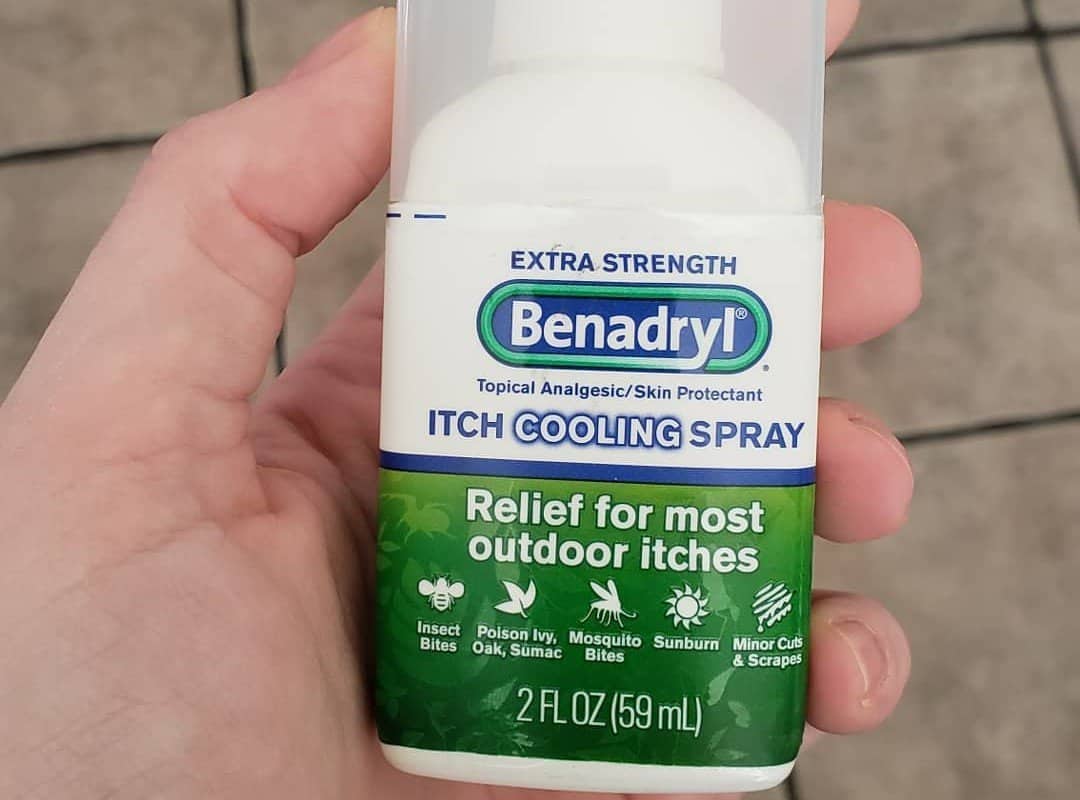
Currently sold by Johnson & Johnson, Benadryl is a brand name that stands for diphenhydramine, a widely used anti-allergy drug also acting as a painkiller. Combined with zinc acetate to offer increased skin protection, the key ingredient relieves the typical sand flea symptoms such as itchiness and pain.
Extra Strength Anti-Itch Cooling Spray has a topical formula that acts on contact. Sand fleas are one of the many insects it’s active against, the rest including mites and mosquitoes. It also provides burn-relief for those who happen to have spent too much time in the sun or touched poisonous plants like poison ivy.
The spray comes in a travel-sized 59 ml plastic bottle. Although the size is great, I’ve found it difficult to spray Benadryl onto the affected area as the dispenser stops working when not upright. This, however, is the only deficiency I have found so far. The spray is safe to use on children from 2 years of age.
| Pros: | Cons: |
|
|
2. Sawyer Products Premium Insect Repellent: Best Sand Flea Repellent
[amazon box=”B07BSN5YLN” template=”vertical” tracking_id=”how-to-get-rid-of-sand-fleas-20″ button_text=”Check price on Amazon”]
Specifications:
- Active Ingredient: Picaridin 20%
- Scent: Unscented
- Item Volume: 4 Fluid Ounces
- Item Form: Spray
- Item Weight: 0.7 Pounds
- Item Dimensions LxWxH: 1.88 x 2.5 x 6.5 inches

This repellent spray has a formula based on 20% Picaridin, which is both safe and at least as effective as DEET in keeping away a wide variety of bloodsuckers. I’ve found this product very effective in preventing sand fly bites. It also wards off a number of pesky flies and mites, which makes it an all-round solution for most holidaymakers.
Sawyer Products Premium Insect Repellent comes in a 118 ml pump spray bottle. I generally prefer spray repellents to lotion formulations as they can be applied to clothing for greater effect. This one is a long-lasting treatment, too. The manufacturer promises up to 12 hours of protection.
| Pros: | Cons: |
|
|
3. Wondercide Natural Ready to Use Yard Flea, Tick and Mosquito Spray: Best Sand Flea Treatment for Yard
[amazon box=”B01FWRX2NM” template=”vertical” tracking_id=”how-to-get-rid-of-sand-fleas-20″ button_text=”Check price on Amazon” button_detail=”https://shareasale.com/r.cfm?b=410159&u=2583381&m=43235&urllink=www%2Edomyown%2Ecom%2Fwondercide%2Dflea%2Dtick%2Dcontrol%2Dyard%2Dgarden%2Drtu%2Dinsecticide%2Dp%2D17058%2Ehtml&afftrack=how%20to%20get%20rid%20of%20sand%20fleas” button_detail_text=”Check price on DoMyOwn”]
Specifications:
- Active Ingredient: Organic Cedar Oil 22.50%
- Item Form: Spray
- Item Weight: 2.35 pounds
- Item Dimensions LxWxH: 9.2 x 6.6 x 2.5 inches
- Target Species: Fleas, Ticks, Mosquitoes, Ants, Chiggers, Chinch Bugs, Crickets, Flies, Gnats, Japanese Beetles, No-See-Ums, Roaches, Scorpions, Repels Venomous Snakes
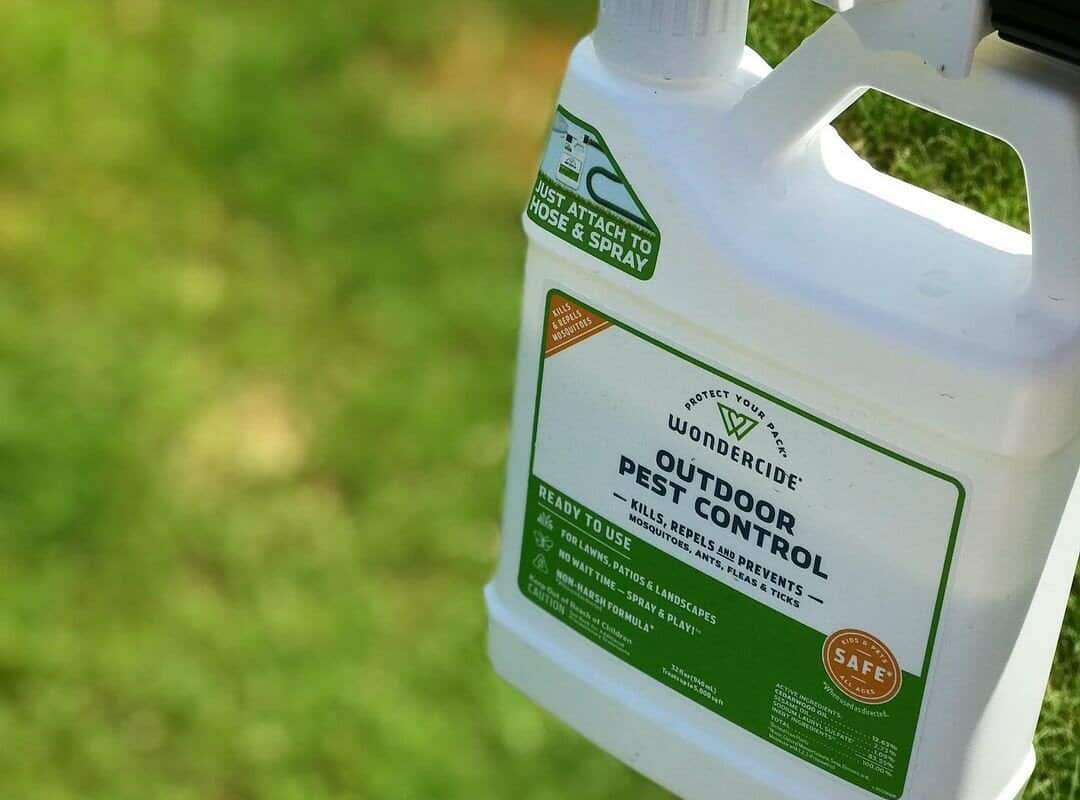
As its name suggests, this spray repellent pesticide has a naturally-based formula with cedar oil as its key ingredient. This means extra safety, which pet owners and parents will probably appreciate. The formula was designed to spare your flowers and vegetable garden as well.
As a bonus, you don’t have to wait for it to dry so you can enter the area under treatment. All you need to do is attach the plastic can to your garden hose and spray the backyard safely.
Wondercide Natural Ready to Use Yard Flea, Tick and Mosquito Spray is a versatile insecticide that kills a number of bug species, also breaking their life cycle — truly a key to success when it comes to expelling pests from your living space.
The only problem that I have found with this product is that the spray system seems to fail when there’s not so much liquid left in the container, so you have to loosen the cap manually to let in some air.
| Pros: | Cons: |
|
|
Related Post: What are the Best Flea Sprays on the Market?

Summing It Up
Sand fleas is a name shared by several pesky species that leave itchy, painful, and potentially infected bites. They feel at home in cool, damp places, which means that heading for the beach early in the morning isn’t the best idea. But with effective solutions to keep the bugs away, like DEET or Picaridin repellent – you are all good!
Keep in mind that there’s a number of products that can be used for sand flea bite treatment, from natural remedies like aloe gel to factory-made soothing creams. Different people report different effects using these solutions, so I’d really appreciate it if you shared your experience.
What products do you find helpful? Which hacks failed? Feel free to comment below!
References:
- Coping with No-See-Ums (University of Arizona Cooperative Extension):
https://cals.arizona.edu/yavapai/anr/hort/byg/archive/noseeums2011.html - Leishmania, microbiota and sand fly immunity(US National Library of Medicine
National Institutes of Health):
https://www.ncbi.nlm.nih.gov/pmc/articles/PMC6137379/

